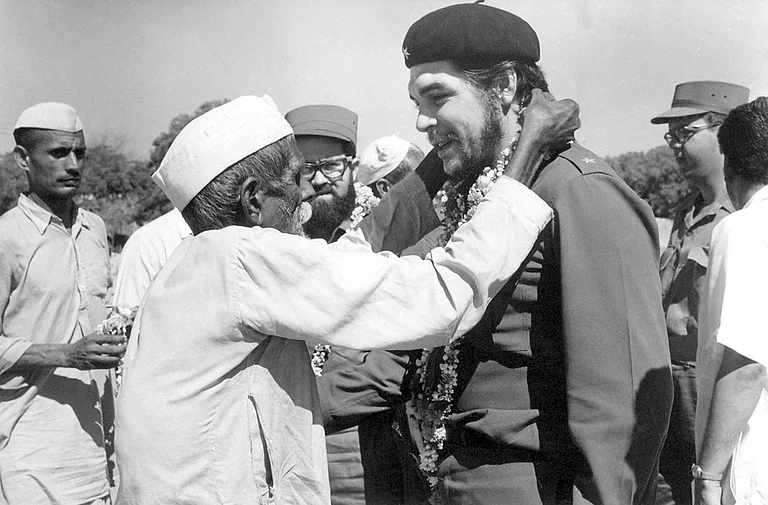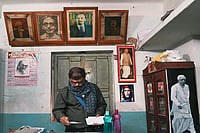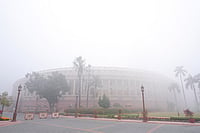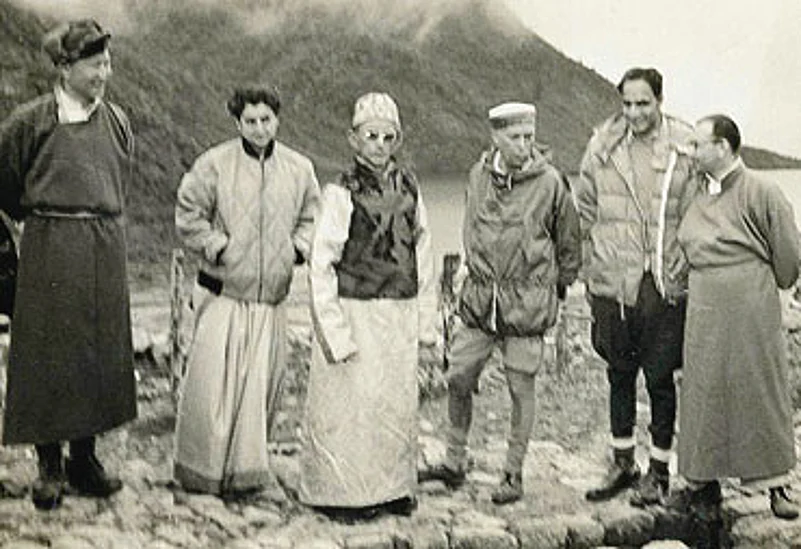
Historically, China has been reluctant to open sensitive areas like Tibet and Xinjiang to foreign trade. The Sherathang trading post, 7 km from Nathu La, was born out of China's first concession to India on the border dispute proposed during prime minister Vajpayee's visit to Beijing in June 2003. But the Indian army had long opposed the construction of roads from the Sino-Indian border to the interior as a security hazard. This time, the hesitation on the part of Beijing or New Delhi was over-ridden by the enthusiasm in Gantok. The Nathu La Study Group constituted by the Sikkim government estimated that trade in the region could cross Rs 206 crore by 2007.
But the colours and sounds of the morning could barely conceal the lacklustre manner in which the primary objective of reopening Nathu La got under way. Though 104 Indian traders went over to TAR, they did so empty-handed. "We're just taking along our brochures and lists of items we can offer with the rates. Once we clinch the deals with traders on the other side, the trucks will start rolling," said K.B. Gurung, who manufactures 'Sikkim Supreme' pickles, jams and other foodstuff. Gurung hopes to receive orders at Renqinggang, the trade mart in Tibet that's 13 km from Nathu La. The Indian traders were herded into Chinese buses and driven to that trade mart where, over a lunch of Chinese dishes, they spoke business with their Tibetan counterparts under the watchful eyes of Chinese officials. Sikkim's traders can export 29 items while the Tibetans can bring in 15. Trading will be allowed from Monday to Thursday between 7.30 am and 3.30 pm. A maximum of a hundred traders and sixty goods-laden trucks will be allowed to cross over from either side daily. Traders have to return the same day.
But these, argue votaries of trade, are just temporary restrictions. "The items of trade will definitely increase and other restrictions will also be lifted slowly. There's good reason now for limited trade," professor Mahendra P. Lama, chairman of jnu's Centre of South, Central, Southeast Asian & Southwest Pacific Studies and head of the Nathu La Trade Study Group told Outlook. "The scope and volume of trade would definitely increase," says Saurabh Kumar, director (China), ministry of external affairs. Chamling is already raising the pitch for allowing tourism in the region.
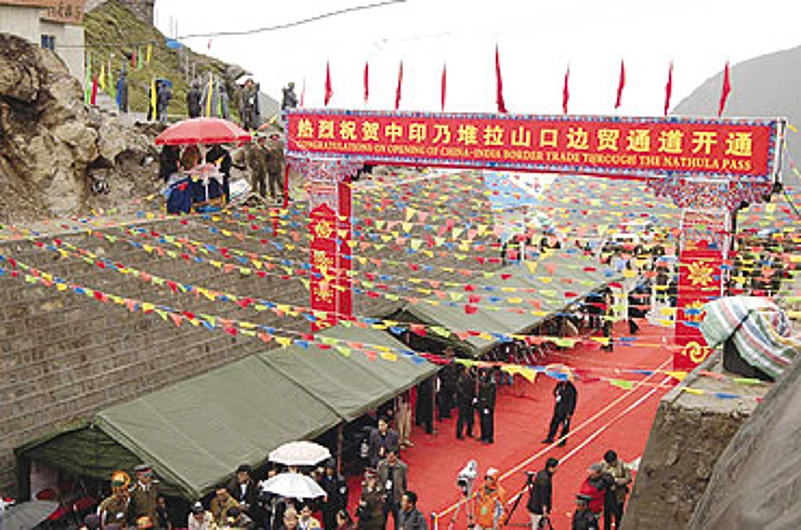
Octogenarian Motilal Lakhotia, who started trading with Tibet in 1954 and had a large office at Yatung (in Tibet, 37 km from Nathu La), was dreamy-eyed while crossing over into TAR on Thursday. "I know this is the start of something so big we can't even imagine now. Trade through Nathu La will not only benefit Tibet and Sikkim but will also mark a new beginning towards good Indo-China ties," he said. "I've waited 44 years for this. I still retain the name of my company—'Sikkim-Tibet Trading Company'. My patience and prayers are paying off now," he added.
It was less easy, however, to decipher the feelings of the 89 Tibetan traders who trooped into the trade mart at Sherathang to 'hardsell' their own merchandise. Tsering Chedu, a formidable lady who headed the Tibetan delegation, told Outlook: "I run a business in Shyasima (an hour's drive from Nathu La). Let's see what I can buy and sell here." The fact that they're here, or that China has allowed them to be here, is proof enough that China is enthusiastic about Nathu La. And only time will tell if India matches this enthusiasm to make Lama's projections of Nathu La trade volume touching Rs 12, 203 crore in nine years' time a reality.










